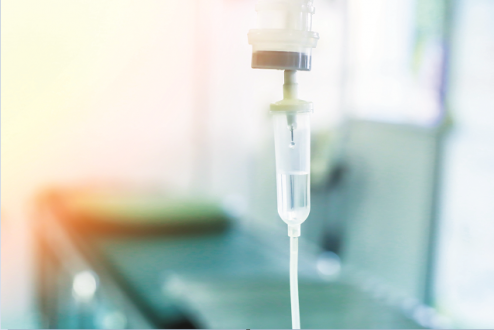Nitroglycerin medications are extended-release capsules that belong to a class of drugs, nitrates that reduce chest pain or angina in individuals affected with a heart condition associated with the coronary artery. The cause of angina is the heart muscle’s inability to receive enough blood. This medication functions by widening the blood vessels making the blood flow easily to the heart. Nitroglycerin is used before various physical activities to lessen the probability of chest pain. The list of those physical activities may involve exercise and sexual activity. Doctors may also consult several other medications to serve the same purpose as nitroglycerin.
However, nitroprusside serves as a source of a potent peripheral vasodilator, nitric oxide. It influences venules more than arterioles. This medication is sometimes administered intravenously to individuals undergoing any hypertensive emergency.
Nitroprusside is a potent venous and arterial vasodilator. It maintains a well-balanced venous and arterial dilation. Whereas, nitroglycerin compared to nitroprusside, is more of a vasodilator, especially at low doses.
Nitroglycerin vs Nitroprusside Mechanism
Mitochondrial aldehyde dehydrogenase enzyme converts nitroglycerin to nitric oxide (NO). Nitric oxide then later activates the guanylate cyclase enzyme. After its activation, the synthesis of cyclic guanosine 3′,5′-monophosphate (cGMP) occurs, which initiates a cascade of protein kinase-dependent phosphorylation in the smooth muscles. This process leads to the dephosphorylation of the myosin light chain of smooth muscles responsible for the relaxation and better blood flow in arteries, veins, and cardiac tissue. These processes cause the functioning of the heart and blood pressure to decrease. It also leads to the relief of anginal symptoms and increases the blood flow to the myocardium. According to one in vitro study, nitric oxide attacks the natriuretic peptide receptors.
The mechanism of action of sodium nitroprusside involves the breakdown in circulation, releasing nitric oxide. It is the binding of oxyhemoglobin that releases methemoglobin, cyanide, and nitric oxide. Nitric oxide activates guanylate cyclase in the vascular smooth muscle and elevates the intracellular production of cGMP.
Nitroglycerin vs Nitroprusside Indications
The indications of nitroglycerin are prevention and treatment of angina or chest pain due to cardiovascular disease. This medication also cures intraoperative hypotension. Nitroglycerin is also indicated to treat an acute heart dysfunction with myocardial infarction. The doctors suggest it as an ointment to treat pain due to the anal fissures. Acute anginal attacks are also prevented; by applying them directly to the skin.
However, sodium nitroprusside was the first to gain FDA approval to treat severe hypertension. It is used clinically for cardiac failure, vascular/cardiac surgery, hypertensive cases, pediatric surgery, and several other acute applications. There are a few adverse effects associated with the sodium nitroprusside medication; for this reason, it has been replaced; by newer agents in some practices. In complicated situations requiring a fast-acting and titratable vasodilator, nitroprusside is effective. The FDA-approved indications are acute decompensated heart failure, acute hypertensive cases, and perioperative hypotension. The off-label uses include preload reduction in selected patients with valvular aortic stenosis, afterload reduction in acute mitral regurgitation, and hypertension in acute ischemic stroke. It also involves increased cardiac output in cardiogenic shock.
The emerging applications of this medication include symptomatic treatment of schizophrenia, prevention, and cure of the no-reflow phenomenon in the percutaneous coronary intervention.
Nitroglycerin vs Nitroprusside Side Effects
Nitroglycerin may cause several adverse effects. Nausea, flushing, dizziness, headache, lightheadedness, and the tingling of the tongue may occur. If these effects get worse, must tell the pharmacist or doctor shortly. Headache is sometimes an indication that the medication is working. Doctors in such cases recommend an over-the-counter pain reliever with acetaminophen or aspirin. If the headaches last for longer, consult the doctor immediately. To minimize the risk of lightheadedness and dizziness, get up gradually when rising from a lying position. People using nitroglycerin do not exhibit any serious side effects. If individuals in taking this medication develop serious side effects that include irregular or fast heartbeat and fainting, telling the doctor right away is the correct approach.
The adverse effects of sodium nitroprusside are; flushing, tachycardia, bradycardia, severe hypotension, and palpitations. Other side effects from a cardiovascular point of view are shortness of breath, substernal chest pain, and electrocardiographic changes.
Nitroprusside also influences the central nervous system as it causes dizziness, headache, restlessness, apprehension, and increased intracranial pressure. Dermatologically, it causes skin rash, diaphoresis, and local skin irritation with erythematous streaking. The metabolic side effect of using sodium nitroprusside is hypothyroidism. Other side effects include nausea, abdominal pain, vomiting, and muscle twitching. Oncologic or hematologic adverse effects of this medication involve; decreased platelet aggregation and methemoglobinemia.
 Health & Care Information
Health & Care Information 


